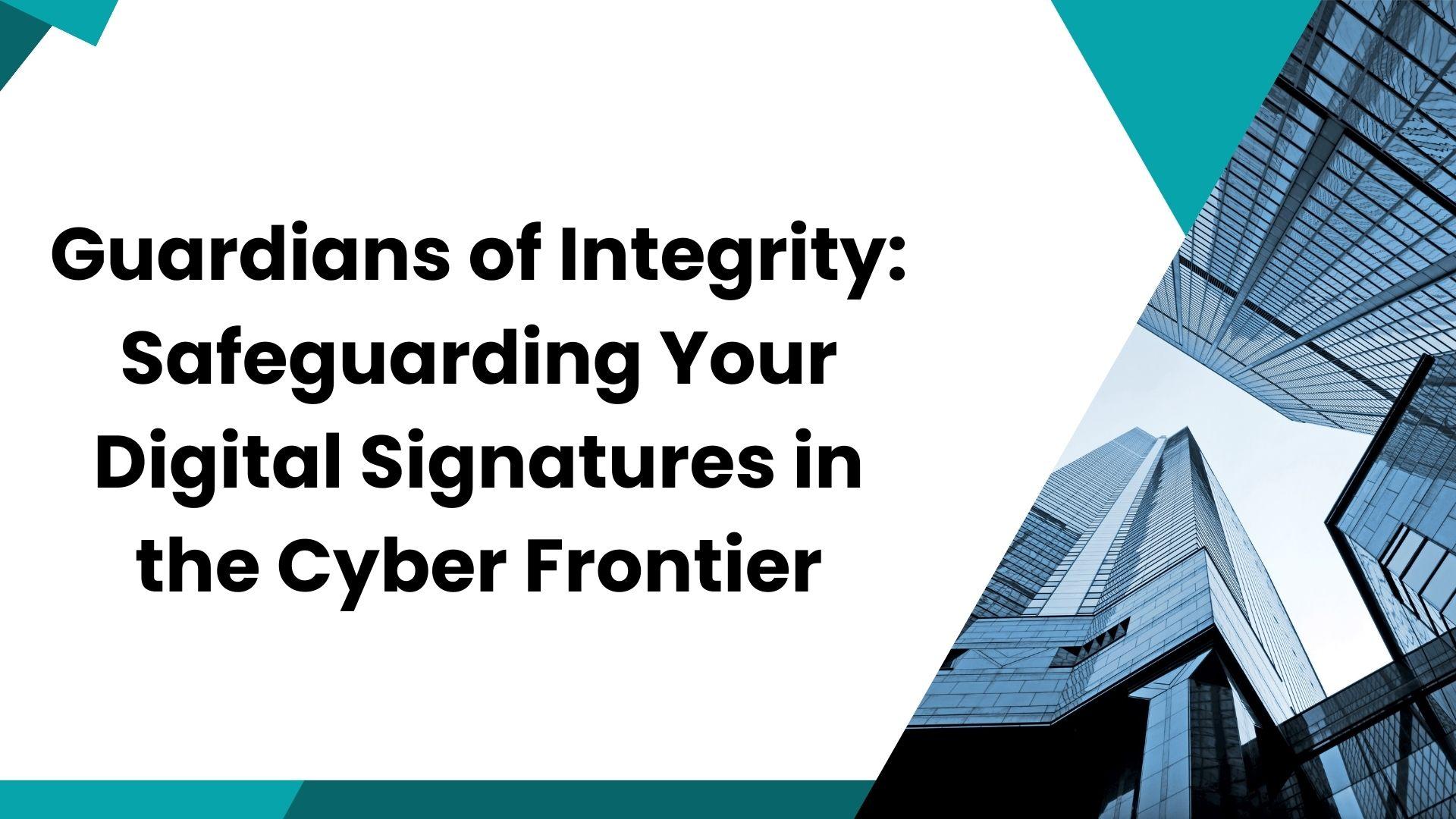Introduction:
In the ever-evolving landscape of the digital age, where communication, transactions, and collaborations are seamlessly conducted online, the importance of safeguarding digital signatures cannot be overstated. Digital signatures serve as the virtual handshake, ensuring the authenticity, integrity, and non-repudiation of electronic documents. As businesses and individuals increasingly rely on digital signatures to streamline processes and enhance security, it becomes imperative to understand the potential risks and implement robust measures for safeguarding these virtual seals.
Understanding Digital Signatures:
Digital signatures are cryptographic techniques that provide a secure way to sign electronic documents. They are created using a pair of cryptographic keys: a private key, known only to the signer, and a public key, which can be shared openly. The private key is used to create the signature, while the public key is used to verify it.
The Risks:
Despite their cryptographic strength, digital signatures are not immune to risks. Cyber threats such as phishing attacks, malware, and advanced persistent threats pose significant challenges to the integrity of digital signatures. If a private key falls into the wrong hands, it can lead to unauthorized access, document tampering, and even identity theft.
Safeguarding Strategies:
Encryption and Key Management:
- Employ robust encryption algorithms to protect the private key during storage and transmission.
- Implement secure key management practices, including regular key rotation and secure storage in hardware security modules (HSMs).
Multi-Factor Authentication (MFA):
- Enhance access control by implementing MFA to ensure that only authorized individuals can access and use private keys.
Regular Audits and Monitoring:
- Conduct periodic audits of digital signature processes to identify anomalies or potential security breaches.
- Implement real-time monitoring to detect and respond to suspicious activities promptly.
Employee Training and Awareness:
- Educate employees on the importance of digital signature security and train them to recognize and avoid phishing attempts.
- Foster a culture of cybersecurity awareness within the organization.
Legal Framework and Compliance:
- Understand and comply with relevant legal frameworks and regulations governing digital signatures in your jurisdiction.
- Regularly review and update security policies to align with the evolving legal landscape.
Secure Document Storage and Transmission:
- Use secure, encrypted channels for transmitting and storing digitally signed documents.
- Implement access controls and audit trails to monitor document interactions.
Advanced Technologies for Digital Signature Security:
Blockchain Technology:
- Explore the integration of blockchain for enhanced transparency and immutability of digital signatures. Blockchain’s decentralized and distributed ledger can provide an additional layer of security against tampering.
Quantum-Resistant Algorithms:
- Stay ahead of potential future threats by adopting quantum-resistant cryptographic algorithms. As quantum computing capabilities advance, traditional encryption methods may become vulnerable, making it essential to future-proof digital signature systems.
Continuous Improvement and Adaptation:
Threat Intelligence Integration:
- Integrate threat intelligence feeds to stay informed about emerging cyber threats. This proactive approach allows organizations to adapt their security measures based on real-time information about evolving risks.
Incident Response Planning:
- Develop a robust incident response plan specifically tailored to digital signature security breaches. Timely and effective responses can mitigate the impact of security incidents and prevent further damage.
Collaboration and Standardization:
Industry Collaboration:
- Collaborate with industry peers to share insights, best practices, and threat intelligence. A collective effort can strengthen the overall security posture of digital signature systems across various sectors.
Standardization Efforts:
- Advocate for and contribute to the development of international standards for digital signature security. Standardization fosters interoperability, ensures consistency, and establishes a baseline for security measures globally.
Note: You Can Apply for Buy Digital Signature Certificate
Conclusion:
As we navigate the intricacies of the digital era, safeguarding digital signatures emerges as a critical aspect of ensuring the trustworthiness of online transactions and communications. By adopting a holistic approach that combines robust encryption, access controls, employee training, and compliance with legal standards, organizations and individuals can fortify their digital signatures against the ever-present threats in the cyber frontier. In this era of rapid technological advancement, the guardianship of digital signatures is not just a responsibility but a necessity for fostering a secure and trustworthy digital ecosystem.
